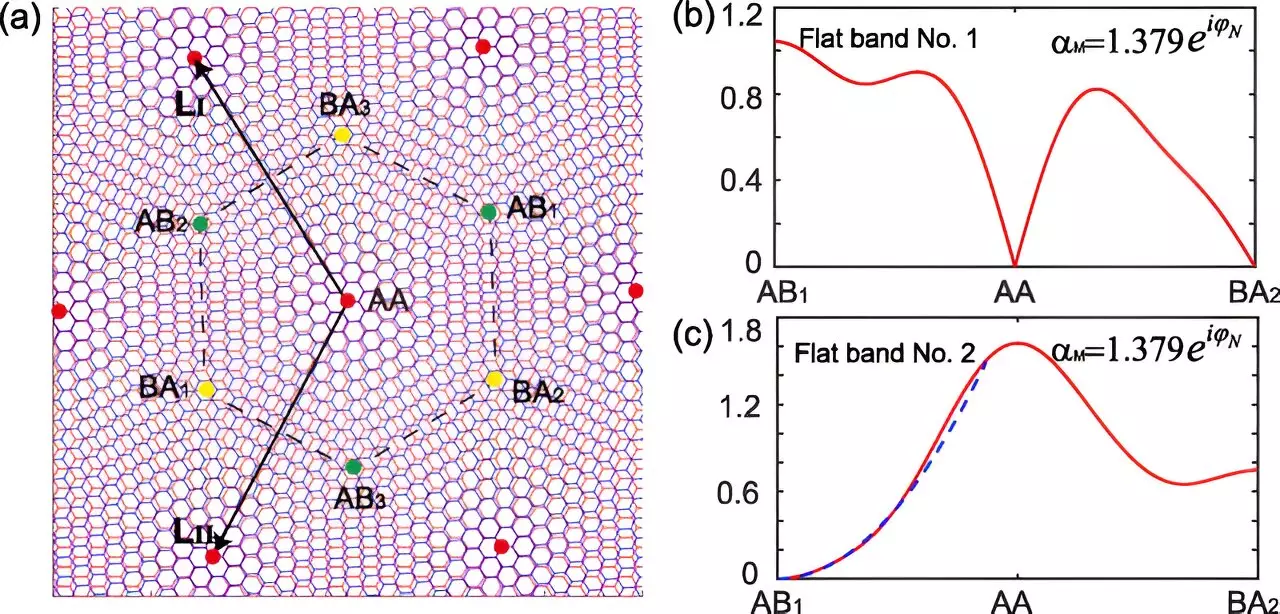Graphene, a single layer of carbon atoms in a hexagonal lattice, has already been established as having unique and exotic properties. Electrons in graphene behave as if they have no mass, opening up possibilities for advanced electronic devices. However, these properties become even more intriguing when multiple layers of graphene are combined, leading to the formation of moiré patterns at specific twisted angles.
Researchers at RIKEN have delved into the world of twisted bilayer graphene to uncover a rich playground for exotic physics. By introducing a spatially varying magnetic field to the system, the researchers have found that the flat bands in twisted bilayer graphene can become even more complex and degenerate, leading to a plethora of correlated electronic phenomena.
In twisted bilayer graphene, the unique band structure gives rise to flat bands when the layers are twisted at specific angles. These flat bands minimize the kinetic energy of electrons, resulting in intense electron-electron interactions that dominate the system. The discovery of strongly correlated electrons in magic-angle twisted bilayer graphene has caused a stir in the physics community, showcasing the potential for unconventional superconductivity and other fascinating phenomena.
By introducing a spatially alternating magnetic field to twisted bilayer graphene, the researchers have uncovered additional magic angles and flat bands that are quadruply degenerate. This higher level of degeneracy opens up new possibilities for exploring correlated phenomena and manipulating the electronic band structure. The magnetic phase offers a novel degree of freedom for tailoring the properties of the system.
As the study of twisted graphene layers continues to unfold, researchers are on a quest to identify other materials that exhibit similar phenomena. The search for new platforms that host flat bands and allow for the manipulation of electronic properties is ongoing. The potential for discovering even more exotic physics and correlated phenomena in these systems is vast, paving the way for future technological advancements.
The impact of magnetic fields on twisted graphene layers cannot be overstated. The ability to engineer flat bands and manipulate electronic properties in these systems opens up a world of possibilities for exploring exotic physics and pushing the boundaries of what is known in the field. As researchers continue to uncover new insights and phenomena in twisted bilayer graphene, the future of electronic devices and materials science looks increasingly promising.


Leave a Reply